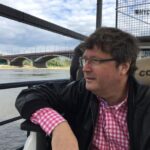Metro Plac Wilsona
Add Your Wilson Square
#Warsaw tour guide #Warsaw city guide # guided tour in warsaw #Warszawa tour guide #Warszawa city guide #guided tour in Warszawa

A huge and vibrant space
When you ascend from the underground, You will straight away be at Plac Wilsona or Wilson Square, named after the American president Woodrow Wilson, who played a decisive role in ensuring, that Poland was recognised as an independent country after the first world war. As such he is in high esteem in Poland. A huge park with play grounds, fountains and special areas for the in loved. It is the most important open space at Żoliborz, created in 1923 with a star shaped road system. Until independence in 1918 Żoliborz wasn’t really a city area, partly because this part of town was dominated by a huge Russian fort.

Functionalism from the interwar period with the Wisła cinema from 1961.
The square is dominated by functionalist buildings from before WWII. Part of the square was destroyed in 1943, but was restored after the war. In general the neighbourhood has been inspired by the square, and if You take a walk on the roads leading to the square, You will find dwelling houses inspired by functionalism.

The metro station is considered Warsaw’s most beautiful metro
The metro station itself is considered one of the most elegant in Warsaw, so just to have a look underground it is worth taking the trip to Plac Wilsona. The metro station is characterized by fascinating colours with silver and grey, exciting mosaic floors and interesting geometrical forms.

A peaceful oasis right in the city centre
From the square You can enter the Żeromski-park (see Forests and parks in Warsaw), which is dominated by an old fort. A part of the residents in Żoliborz consider themselves to belong to Warsaw’s intellectual elite, and the park reflects this with its tranquillity and civilised behaviour.
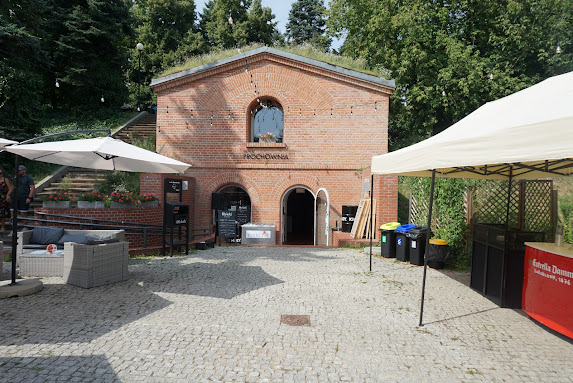
The powder magazine has been transformed into a small restaurant.
The park was erected in the interwar period, where is was named after one of Poland’s great late romantic writers, who played an important role in forming the national character after the independence in 1918.

The Stanisław Kostki Church from inside
A few hundred metres away through Feliński street You will discover the Stanisław Kostki church, which was also erected in the interwar period. The church consists of a few neo-romanesque elements, but is generally constructed in accordance with the functional style in the area.

All visitors are greeted by the statue of the killed priest – and behind him we have Hotel Amicus, which secures safe accommodation for the many pilgrims.
The church is the home of fundamentalist catholic elements and is visited by many pilgrims, who are visiting the tomb of Jerzy Popiełuszko. Popiełuszko was a priest working together with the anti communist trade union, Solidarity, and in 1984 he was murdered and tortured by agents from the security service. Even though individuals were later convicted for the murder, many people thought the murder to be a crime committed by the communist system, and Popiełuszko is today considered to be a martyr. In the basement You will find a Popiełuszko museum with objects from the fight against the communist system.

A few hundred metres from the Square we also find the Comedy Theatre (Teatr Komedia) at Słowacki street 19a
The huge Comedy Theatre at Słowacki street. The street has been named after one of Poland’s greatest romantic poets and play writers, Juliusz Słowacki
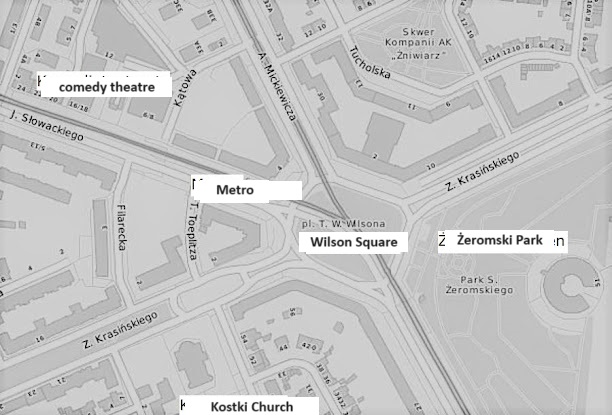
Longer trips 15-20 minutes
Walk down towards the river through Krasiński street. When You get down to the main road by the river, there is another 200 metres to the Russian military fort, the Citadel.
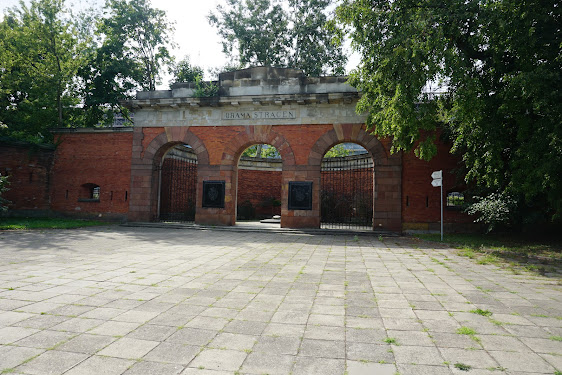
The entrance through the execution gate, where the prisoners walked on their way to the gallows – here with commemorative plaques and crosses for the murdered
Warsaw was under Russian rule from 1814 till 1918, and as time went by, the rule became increasingly suppressing relating to Polish language and culture, not to mention political freedom. After suppressing an uprising against the Russian rule in 1831, the Citadel was finished from 1832 till 1834 with the declared goal of preventing new uprisings in this large Polish town with all its free-thinking and desire for freedom.


At the old military terrain we also find an old carriage for transport of prisoners during the Russian rule, i.e. From 1814-1918.
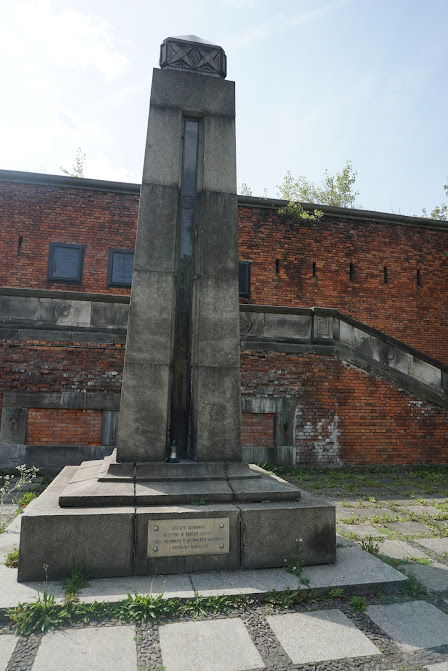
What remains of the original gallows
A tour through the Citadel means experiencing the tyranny Poland was then subject to. The crosses in front of the Citadel symbolise the people, there have been executed here throughout the Russian rule, and a real gallows has been preserved and placed in a case with a glass front in order to make it last for yet some years. This is where the hanged could enjoy the view of the river, while thinking about their crimes.

The X Pavilion is a jail museum, but also includes a huge collection of paintings, here the famous “Farewell to Europe” from 1894 by Aleksander Sochaczewski. On the way to Siberia, walking chained through Russia.
The fort also includes prison cells where a number of well known Poles have spend a period of their lives. It is possible to visit the prison cells, see the old carriages and the museum also exhibits different items from a period, where exile to Siberia was a standard punishment for resistance against the Russian rule.
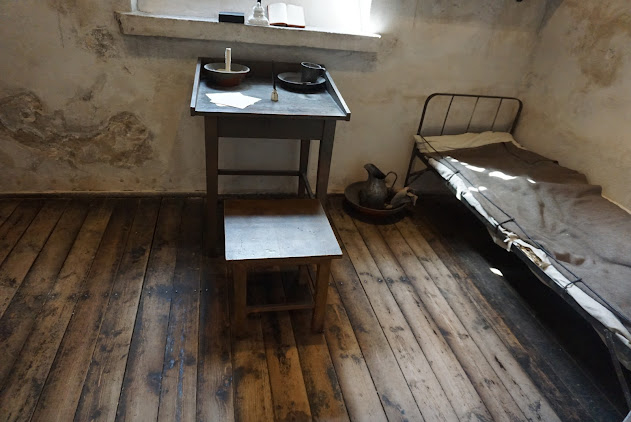
Most of the cells have names on the door, so You can imagine who lived in them.
The prison cells have been dedicated to the individual prisoners living at the Citadel for a period of time. It is therefore possible to see the cell of the freedom hero, Piłsudski – and feel the proximity of other great Poles, known from Polish history lessons.
A part of Muzeum Niepodległości (Museum of Independence). Address: Skazańców 25. Open Tuesday till Sunday during the day.
At the Citadel we will also find Muzeum Katyńskie – dedicated to the soviet execution of Polish prisoners of war during the second world war. It is a museum of suffering typical for the era. The visitor follow dark corridors, and the light by the end of the tunnel gives an impression of the sufferings the Russians have imposed on the Polish people. Address: ul. Jana Jeziorańskiego 4. Open Wednesday till Sunday 10-16. Read more under “the Second world war in Warsaw”.
At present a branch of the Polish Army Museum and a Museum of Polish History is being erected at the Citadel.
Please send an email to m@hardenfelt.pl if you would like an English-speaking tour guide to show you the most important places in Warsaw.

